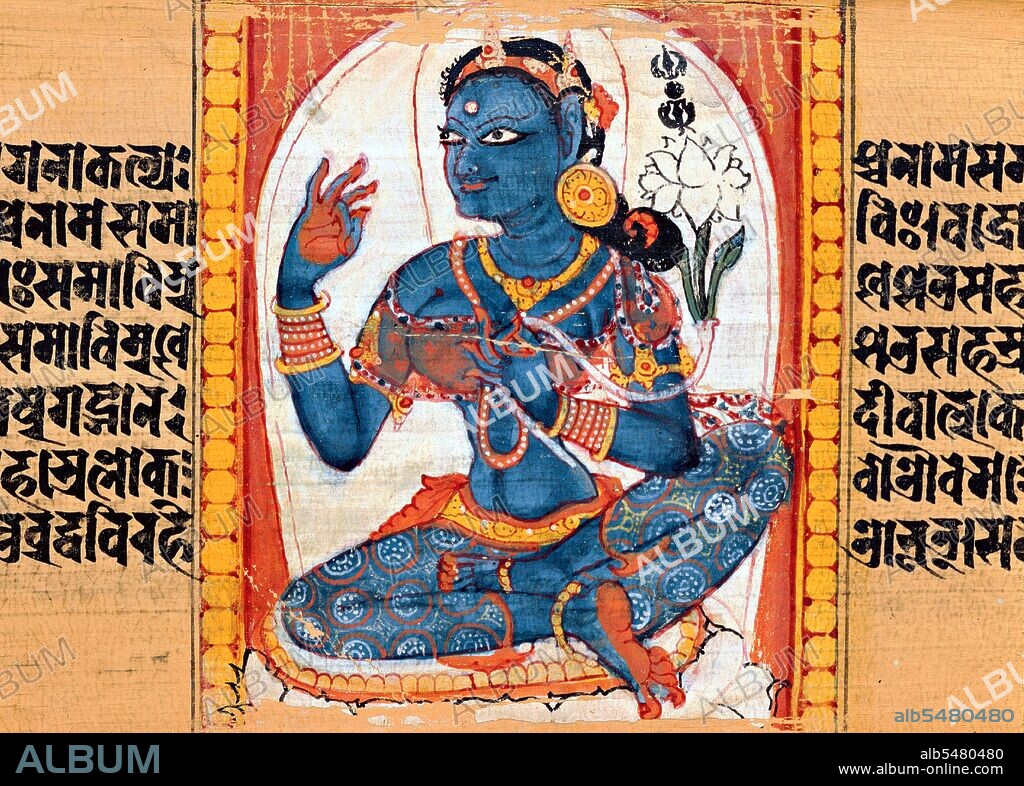alb5480480
India: Astasahasrika Prajnaparamita Sutra, Pala Era (11th century CE)

|
Zu einem anderen Lightbox hinzufügen |
|
Zu einem anderen Lightbox hinzufügen |



Haben Sie bereits ein Konto? Anmelden
Sie haben kein Konto? Registrieren
Dieses Bild kaufen.
Nutzung auswählen:

Titel:
India: Astasahasrika Prajnaparamita Sutra, Pala Era (11th century CE)
Untertitel:
Siehe automatische Übersetzung
The Heart Sutra (Sanskrit: ?????????????????? Prajñaparamita H?daya; Chinese: ????????) is a Mahayana Buddhist sutra. Its Sanskrit name Prajñaparamita H?daya literally translates to 'Heart of the Perfection of Transcendent Wisdom'. The Heart Sutra is often cited as the best known and most popular of all Buddhist scriptures. The core teaching is the remphasis of sunyata / dependent origination as the cardinal doctrine of Buddhism. The Pala Empire was one of the major middle kingdoms of India and existed from 750–1174 CE. It was ruled by a Buddhist dynasty from Bengal in the eastern region of the Indian subcontinent, all the rulers bearing names ending with the suffix Pala (Modern Bengali: ??? pal), which means protector. The Palas were often described by opponents as the Lords of Gauda. The Palas were followers of the Mahayana and Tantric schools of Buddhism.
Bildnachweis:
Album / Pictures From History/Universal Images Group
Freigaben (Releases):
Bildgröße:
4950 x 3544 px | 50.2 MB
Druckgröße:
41.9 x 30.0 cm | 16.5 x 11.8 in (300 dpi)
Schlüsselwörter:
ASIEN • ASIEN, KONTINENT • BUDA • BUDDHISMUS • BUDDHISTISCH • GEMAELDE • GESCHICHTE • INDIANER • INDISCH • KONTINENT, ASIEN • KUNST • MALEREI • RELIGION • ZEITGESCHICHTE


 Pinterest
Pinterest Twitter
Twitter Facebook
Facebook Link kopieren
Link kopieren Email
Email
